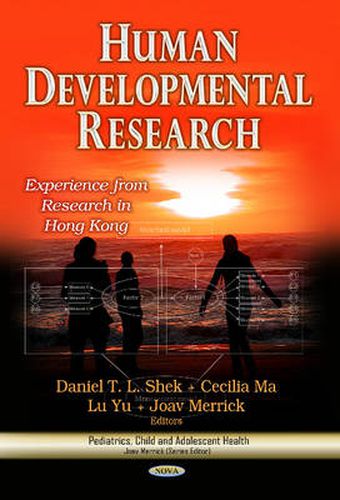Readings Newsletter
Become a Readings Member to make your shopping experience even easier.
Sign in or sign up for free!
You’re not far away from qualifying for FREE standard shipping within Australia
You’ve qualified for FREE standard shipping within Australia
The cart is loading…






Human development research commonly addresses the what , when , how , why , who , and where of human development. For example, with reference to the development of resilience in adolescence, researchers often ask what are the components of resilience ( what ), their development at different time points ( when ), and the related trajectories ( how ). Researchers also attempt to understand factors influencing resilience ( why ) in different adolescents ( who ) in different cultures ( where ). In many adolescent research studies, researchers are interested in asking questions about relationships among developmental events and concepts, such as the relationship between the family environment and resilience. Besides, research questions regarding differences are raised by researchers, such as differences between early adolescents and late adolescents on resilience, and differences in resilience in Chinese and African adolescents. Against this background we present in this book several chapters on the statistical analyses in human development research using real-life datasets based on the positive youth development project (P.A.T.H.S.) in Hong Kong in a pioneer attempt using different Chinese contexts with the wish that we can facilitate Chinese researchers to understand human development research and understand more about statistical analyses.
$9.00 standard shipping within Australia
FREE standard shipping within Australia for orders over $100.00
Express & International shipping calculated at checkout
Human development research commonly addresses the what , when , how , why , who , and where of human development. For example, with reference to the development of resilience in adolescence, researchers often ask what are the components of resilience ( what ), their development at different time points ( when ), and the related trajectories ( how ). Researchers also attempt to understand factors influencing resilience ( why ) in different adolescents ( who ) in different cultures ( where ). In many adolescent research studies, researchers are interested in asking questions about relationships among developmental events and concepts, such as the relationship between the family environment and resilience. Besides, research questions regarding differences are raised by researchers, such as differences between early adolescents and late adolescents on resilience, and differences in resilience in Chinese and African adolescents. Against this background we present in this book several chapters on the statistical analyses in human development research using real-life datasets based on the positive youth development project (P.A.T.H.S.) in Hong Kong in a pioneer attempt using different Chinese contexts with the wish that we can facilitate Chinese researchers to understand human development research and understand more about statistical analyses.